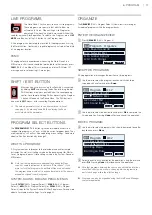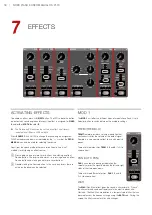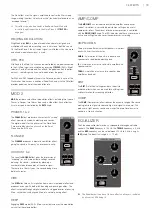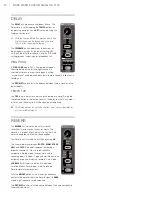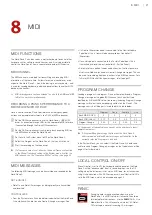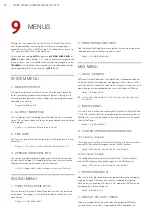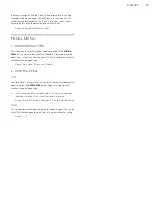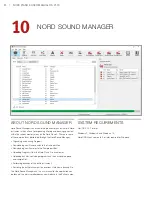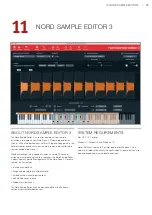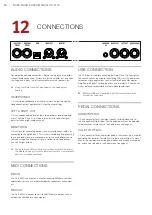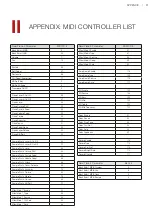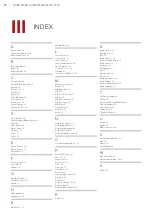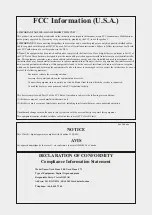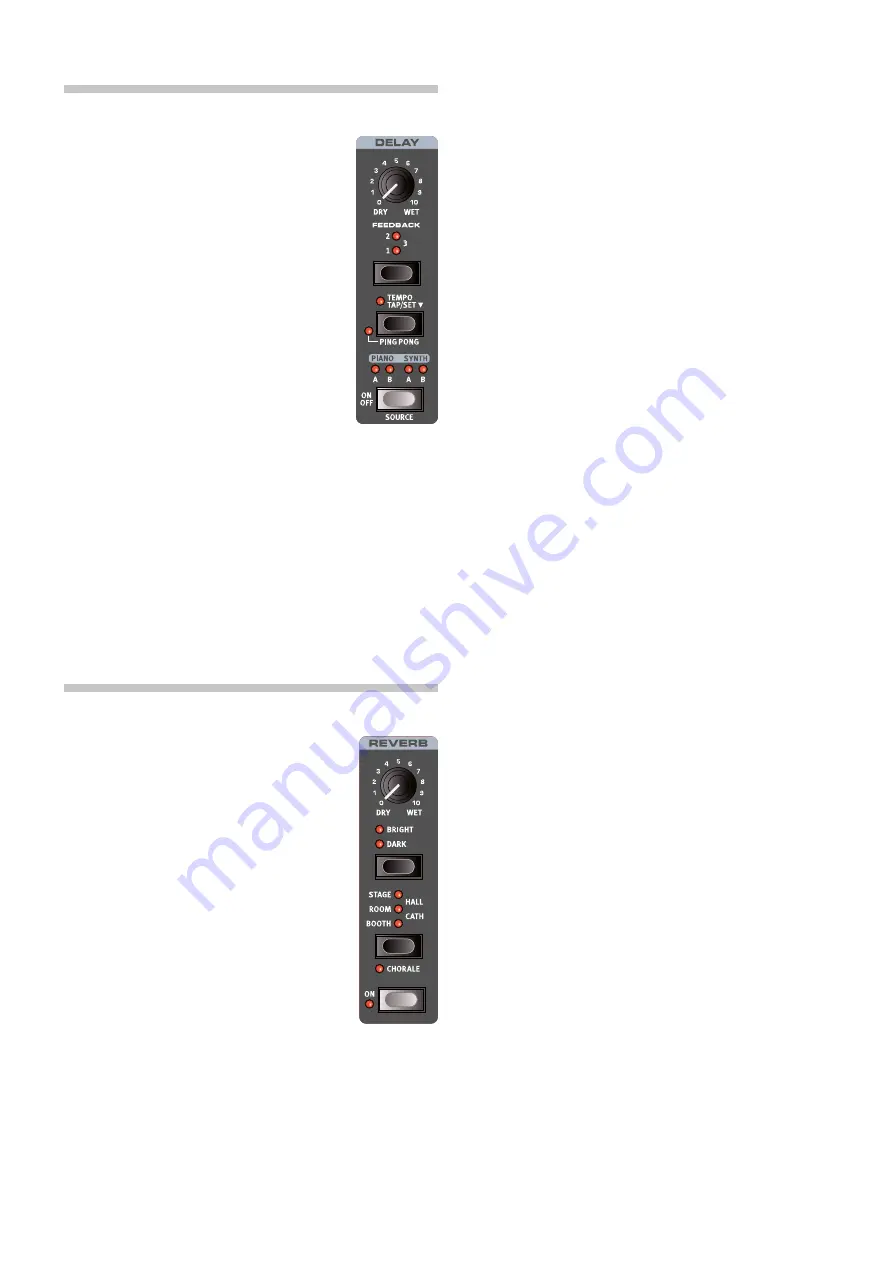
20 | Nord PiaNo 5 User MaNUal os v1.1x
delaY
The
DELAY
unit produces echo/repeat effects. The
delay time is set by tapping the
TEMPO
button, or
by pressing down on it and
SET
the tempo using the
Program section dial.
With the Tempo Set button pressed down, the
Dry/Wet knob can be turned and used as a
short-cut for changing the tempo.
The
FEEDBACK
button determines the number of
delay repeats, or taps. at the lowest setting (led
unlit) only the initial tap is heard, while the
1
,
2
and
3
settings give an increasingly long feedback tail.
PiNG PoNG
in
PING PONG
mode (shift + Tempo) delay repeats
alternate between the left and right channels. if
short delay times are used, these repeats will be
“asymmetrical” and produce delays that are more like early reflections in
reverb units.
The
DRY/WET
knob adjusts the balance between the dry signal and the
delay repeats.
TeMPo TaP
Use
TAP
to set a delay time matching the tempo of a song. simply tap
the Tempo button in the tempo you wish the delay to sync to a number
of times, and the delay time will be adjusted automatically.
M
The Delay unit can be set to have effect on all Layers, indicated by
all source LEDs being lit.
reverB
The
REVERB
unit simulates the natural sound
reflections in various acoustic environments. The
reverb is a “global” effect, which is to say that it will
always be applied to
all
active sound engines.
The reverb unit is turned on or off by pressing
ON
.
The five available reverb types;
BOOTH
,
ROOM
,
STAGE
,
HALL
and
CATH
(Cathedral) represent increasingly
larger environments – from a short, reflective
ambience in Booth mode, through more natural
sounding rooms in room, stage and Hall modes to an
extremely large and immersive reverb in Cath mode.
CHORALE
(shift+Type) is a distinctly modulated
variation of each reverb type, useful to give the
reverb signal more movement.
With the
BRIGHT
option active, more high frequency
content will be preserved in the reverb signal. in
DARK
mode, high frequencies are dampened.
The
DRY/WET
control sets the balance between the unprocessed and
the processed signal.












